Explore creative and budget-friendly ways to transform your space with these ten upcycled DIY room divider ideas. Discover how to enhance your home decor while being environmentally conscious.
Upcycling is the process of taking discarded materials and creatively transforming them into new, functional items. This practice is important as it not only reduces waste but also encourages creativity and resourcefulness in home decor. By upcycling, you contribute to a more sustainable environment while adding a personalized touch to your living space.
Room dividers offer numerous advantages, including:
- Creating Privacy: They can provide a sense of seclusion in open spaces.
- Defining Spaces: Room dividers help delineate different areas within a room.
- Enhancing Aesthetic Appeal: They can add style and character to your home.
Particularly in small apartments or shared living spaces, room dividers can maximize functionality without compromising on style.
Selecting the appropriate materials is crucial for a successful upcycled divider. Consider factors such as:
- Durability: Ensure the materials can withstand wear and tear.
- Style: Choose materials that complement your existing decor.
- Availability: Look for materials that are easy to source or already on hand.
These factors will help ensure a functional and attractive design that suits your needs.
Old wooden pallets can be transformed into a beautiful rustic room divider. To create this, you will need to disassemble the pallets, sand them down to remove rough edges, and finish with a protective coat. This simple project can add charm to your space while being incredibly cost-effective.
Vintage doors can serve as stunning focal points in any room. Look for doors at thrift stores or flea markets, and refurbish them with a fresh coat of paint. Installing hinges allows you to use them as functional dividers, offering both style and practicality.
Old curtains can be repurposed into elegant fabric panel dividers. Cut the curtains to your desired size, sew the edges if necessary, and hang them on a rod or wire. This soft separation of spaces can add warmth and texture to a room.
Bookshelves are not just for books; they can also serve as effective room dividers. Arrange and style your bookshelves with decorative items, plants, and books to enhance the layout of your room while creating distinct areas.
If you prefer an industrial vibe, consider using wire mesh as a room divider. Frame the mesh with wood or metal, and install it to allow light and air to flow while still providing a separation between spaces.
Plants can add life and color to your space while serving as a natural divider. Explore creative ways to incorporate potted plants or vertical gardens into your room divider design, enhancing both aesthetics and air quality.
Macramé offers a unique, textured look for room dividers. Learn the basics of macramé to create intricate designs that can serve as a beautiful and functional separation between areas in your home.
Repurposed old windows can create a charming and nostalgic room divider. Clean and paint the windows to fit your decor, and arrange them for a delightful addition to your home that tells a story.
Once your room divider is complete, styling it is essential for integration into your decor. Consider adding decorative items, artwork, or lighting to enhance the visual appeal. This will not only make your divider functional but also a stunning focal point in your home.
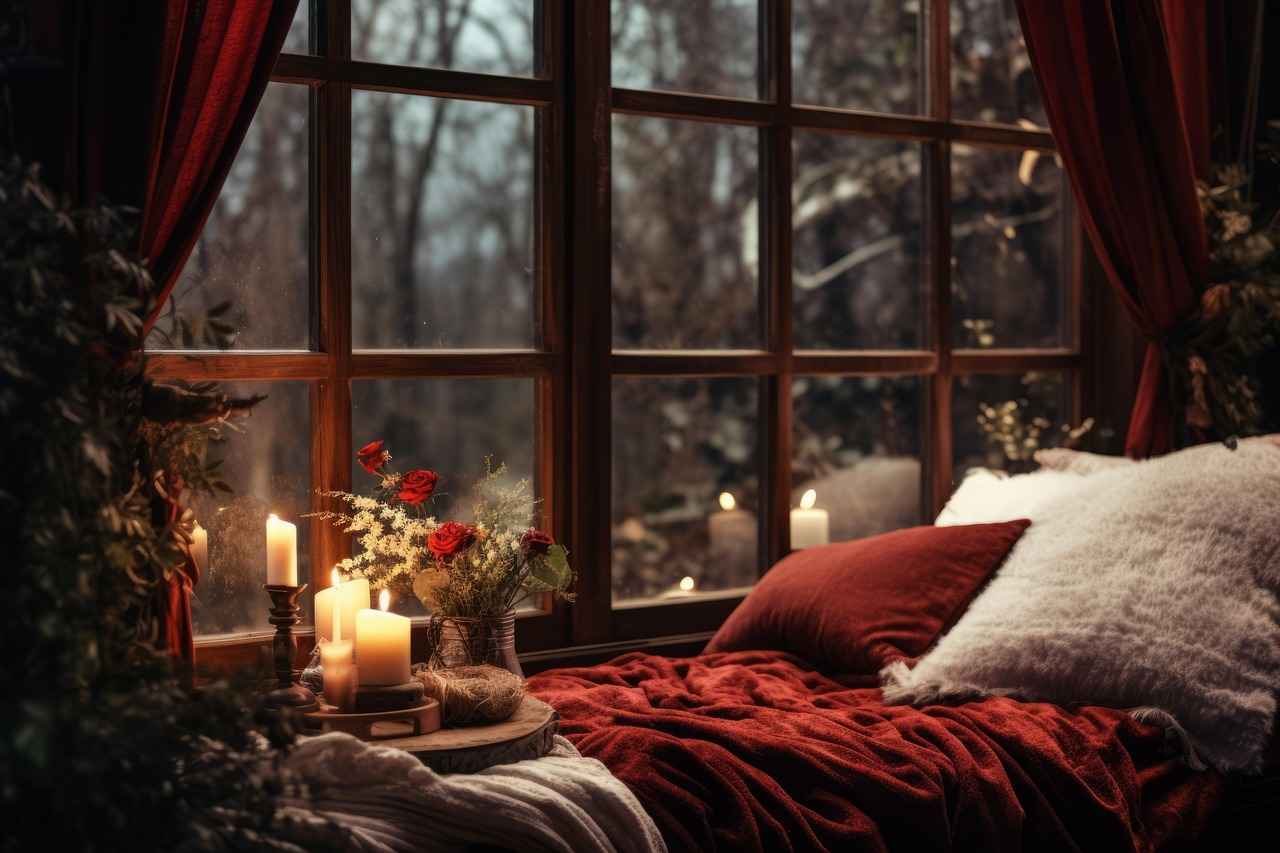
What is Upcycling and Why is it Important?
Upcycling is a creative and innovative process that involves taking discarded materials and transforming them into new, functional items. This practice is not just about reusing what we have; it’s about enhancing the original materials and giving them a new life. By upcycling, we can significantly reduce waste, which is crucial in our fight against environmental degradation. It promotes a culture of sustainability, encouraging individuals to think critically about their consumption habits.
But why is upcycling so important? First and foremost, it helps to minimize landfill waste. According to the Environmental Protection Agency (EPA), millions of tons of waste end up in landfills each year, much of which could be repurposed. By upcycling, we extend the lifecycle of materials, thereby reducing the demand for new products and the resources required to create them.
Additionally, upcycling fosters creativity and resourcefulness. When people engage in upcycling projects, they often discover new skills and techniques that can enhance their DIY abilities. This creative process can be incredibly fulfilling, allowing individuals to express their personal style through unique home decor items. For instance, transforming an old wooden pallet into a stylish coffee table not only adds character to a living space but also tells a story of creativity and innovation.
Moreover, upcycling can lead to substantial cost savings. Instead of purchasing expensive new furniture or decor, individuals can use what they already have, which is often more affordable. This approach is particularly beneficial for those on a budget, as it allows for the creation of beautiful and functional items without breaking the bank.
In a world increasingly focused on sustainability, upcycling also plays a vital role in promoting environmental awareness. It encourages people to think about the lifecycle of products and the impact of their choices. By sharing upcycling projects and ideas, communities can inspire others to join the movement, creating a ripple effect that can lead to broader societal change.
Furthermore, upcycling can enhance the aesthetic appeal of a home. Unique, handcrafted items often serve as conversation starters, adding a personal touch to any space. Whether it’s a chic room divider made from repurposed doors or a stylish planter crafted from old tin cans, these upcycled pieces can elevate the overall look of a room.
In conclusion, upcycling is more than just a trend; it’s a necessary practice that benefits both individuals and the environment. By embracing this creative approach, we can reduce waste, save money, and foster a more sustainable lifestyle. As we continue to explore innovative ways to repurpose materials, we contribute to a healthier planet and a more resourceful community.
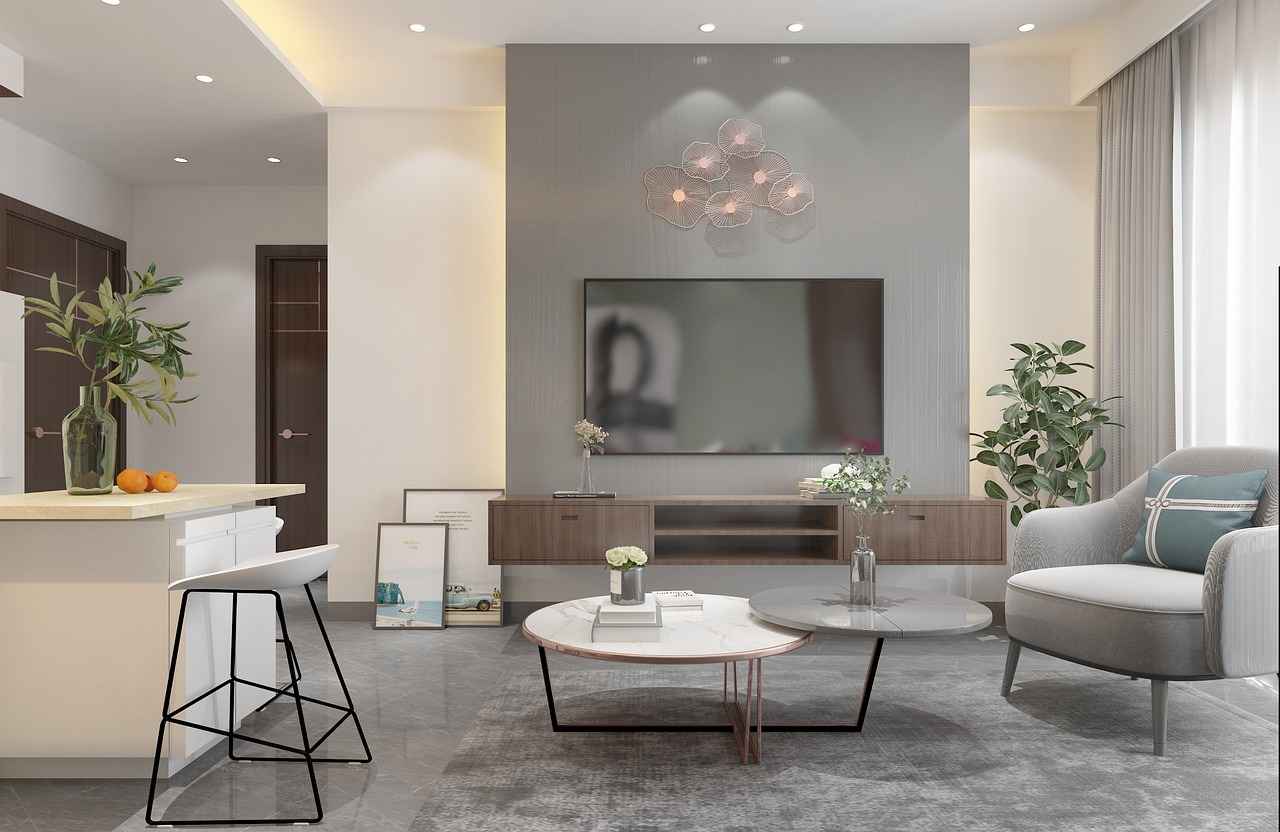
Benefits of Using Room Dividers
Room dividers are versatile elements that can significantly enhance the functionality and aesthetics of any space. Whether you live in a compact apartment or a larger home, the use of room dividers can transform your living environment in several beneficial ways. Below are some of the key benefits of using room dividers.
One of the most significant advantages of room dividers is their ability to create privacy. In shared living spaces, such as studios or apartments with multiple roommates, a room divider can provide a sense of personal space. This is particularly important in areas like bedrooms or workspaces, where individuals may need to focus or relax without distractions.
Room dividers help in defining spaces within a larger area. For instance, an open-plan living room can feel more organized with a divider that separates the dining area from the lounge. This not only enhances the functionality of each space but also contributes to a more coherent interior design. By visually segmenting areas, room dividers can make a room feel more structured and intentional.
In addition to their practical benefits, room dividers can also serve as striking decorative elements. They come in various styles, materials, and colors, allowing homeowners to express their personal taste. From elegant fabric panels to rustic wooden screens, the right divider can complement existing decor and even become a focal point in the room.
For those living in small apartments, room dividers can be a game-changer. They can help maximize functionality by allowing for multiple uses of a single space. For example, a room divider can transform a corner of the living room into a cozy workspace or a reading nook, making the most out of limited square footage.
Another often-overlooked benefit of using room dividers is their ability to improve acoustics in a space. By breaking up sound waves, dividers can help reduce noise levels, making it easier to concentrate or enjoy a peaceful environment. This is particularly beneficial in homes with children or in shared living situations where noise can be a concern.
Room dividers offer flexibility in how spaces are used. They can be easily moved or reconfigured to adapt to changing needs, making them a practical solution for dynamic living environments. This is especially useful for those who frequently host guests or change their room layouts for different occasions.
Many room dividers can also incorporate natural elements, such as plants, which can enhance the overall ambiance of a space. Greenery not only adds visual interest but also improves air quality, contributing to a healthier living environment. Using plants as dividers can create a calming atmosphere while maintaining openness.
Lastly, room dividers can be a cost-effective solution for improving home functionality. Compared to major renovations or the construction of permanent walls, dividers are generally more affordable and easier to install. This makes them an attractive option for renters and homeowners alike who want to enhance their living spaces without breaking the bank.
In summary, the benefits of using room dividers extend beyond mere aesthetics. They create privacy, define spaces, and enhance the overall functionality of your home. Whether you opt for a simple screen, a bookshelf, or a plant divider, these versatile elements can significantly improve your living environment.

How to Choose the Right Materials for Your Divider?
When embarking on a DIY project, particularly for creating an upcycled room divider, the choice of materials plays a pivotal role in the overall success of the design. Selecting the right materials not only affects the durability and functionality of the divider but also influences its aesthetic appeal. Here are some essential factors to consider when choosing materials for your project.
- Durability: Ensure that the materials you select can withstand daily use. For instance, if you are using wood, opt for hardwoods or treated materials that resist wear and tear. If you choose fabric, consider options that are stain-resistant and easy to clean.
- Style: The materials should complement your existing decor. For a modern look, sleek metals or glass might be ideal, while vintage styles may benefit from reclaimed wood or antique doors.
- Availability: Consider what materials are readily available to you. Scavenging local thrift stores, garage sales, or even your own home can yield unique finds. This not only keeps costs low but also adds a personal touch to your divider.
- Weight: Keep in mind the weight of the materials, especially if you plan to move the divider frequently. Lightweight materials like fabric or lightweight wood can be easier to handle.
- Eco-friendliness: Since upcycling is about sustainability, strive to choose materials that are environmentally friendly. Look for options that are recycled or reclaimed to minimize your carbon footprint.
In addition to these factors, think about how the materials will interact with each other. For example, combining metal frames with wooden panels can create a striking contrast that enhances the overall design. Similarly, pairing fabric with natural elements, such as plants, can add warmth and texture to your divider.
Lastly, don’t forget to consider the functionality of your divider. Will it be used to create a private space, or is it more about visual separation? Understanding its purpose will help guide your material choices. For example, if privacy is a concern, thicker materials or layered fabrics may be more suitable.
In summary, selecting the right materials for your upcycled room divider involves careful consideration of durability, style, availability, and eco-friendliness. By keeping these factors in mind, you can create a divider that is not only functional but also a beautiful addition to your space.
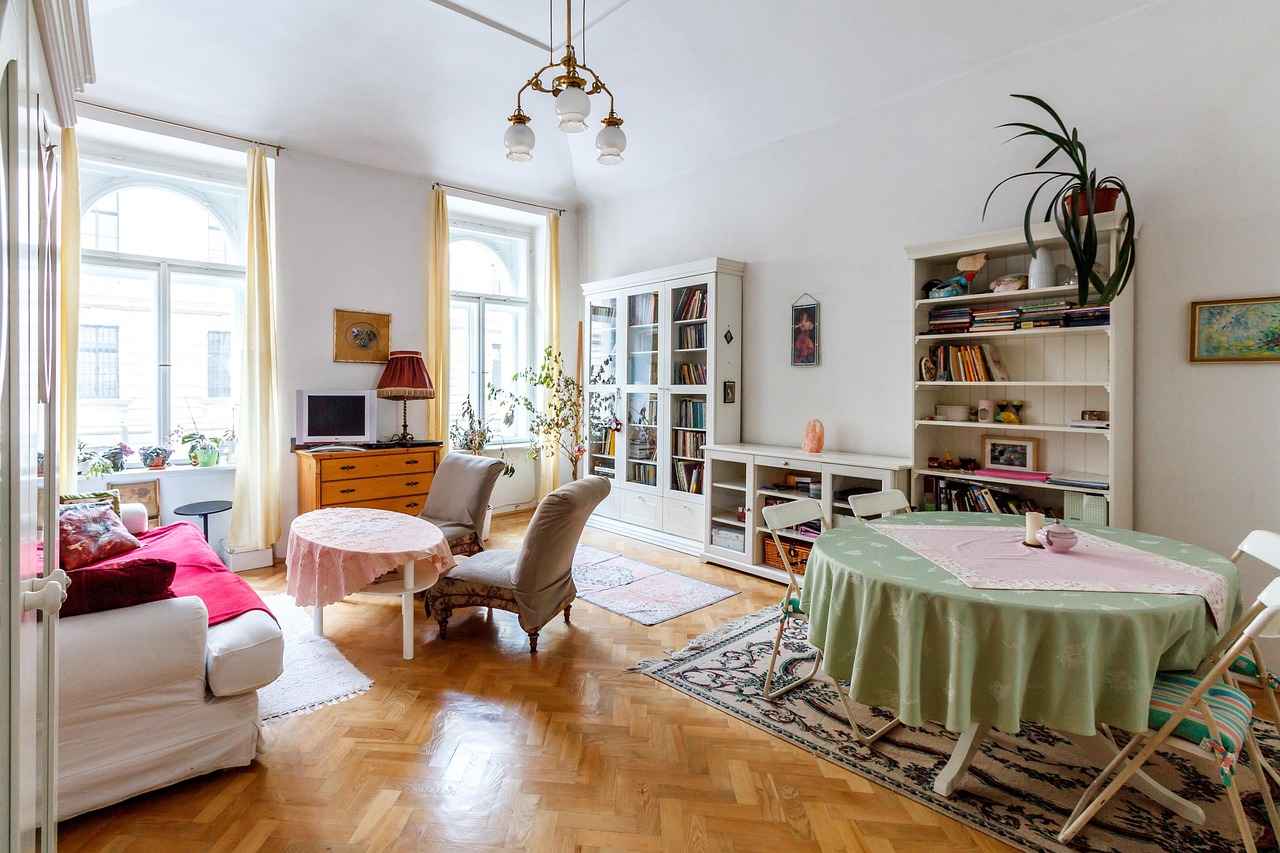
Repurposing Old Pallets for a Rustic Divider
Repurposing old wooden pallets into a rustic room divider is not only a sustainable choice but also a creative way to enhance your home decor. This project allows you to add character to your space while keeping costs low. In this section, we will explore the steps necessary to transform these pallets into a stunning divider that can define areas within your home.
Old pallets are widely available and often free or inexpensive, making them an excellent choice for DIY projects. Their natural wood finish brings a warmth and rustic charm to any room, allowing you to create a unique focal point. Additionally, using pallets promotes sustainability by repurposing materials that would otherwise end up in landfills.
- Disassemble the Pallets: Start by carefully taking apart the pallets using a pry bar or crowbar. Be cautious to avoid damaging the wood, as you will be reusing these pieces.
- Sanding the Wood: Once disassembled, sand each piece thoroughly to remove rough edges and splinters. This step is crucial for achieving a smooth finish and ensuring safety.
- Staining or Painting: After sanding, decide whether you want to leave the wood natural or apply a stain or paint. A light stain can enhance the wood grain, while paint can add a pop of color to your divider.
- Assembling the Divider: Arrange the pallet pieces in your desired configuration. You can create a simple screen by standing the pallets upright or connecting them with hinges for flexibility.
- Finishing Touches: Add any additional elements such as hooks for hanging plants or decorative items, or even shelves for added functionality. This customization allows you to tailor the divider to your personal style.
Once you have constructed your rustic divider, consider how to style it. Here are some ideas:
- Incorporate Plants: Attach small planters to the divider for a natural touch that adds life to your space.
- Use Lighting: String lights or small lamps can create a cozy ambiance, enhancing the overall look of the divider.
- Decorate with Art: Hang artwork or photographs on the divider to personalize your space and make it feel more inviting.
To ensure the longevity of your pallet room divider, consider the following maintenance tips:
- Regular Dusting: Keep the surface clean by dusting it regularly to prevent buildup.
- Inspect for Damage: Periodically check for any signs of wear or damage, especially if the divider is exposed to moisture.
- Reapply Finish: Depending on the finish you used, you may need to reapply stain or paint every few years to maintain its appearance.
Repurposing old pallets into a rustic room divider is a rewarding project that combines creativity with sustainability. By following these steps and tips, you can create a beautiful and functional piece that enhances your living space while being kind to the environment.
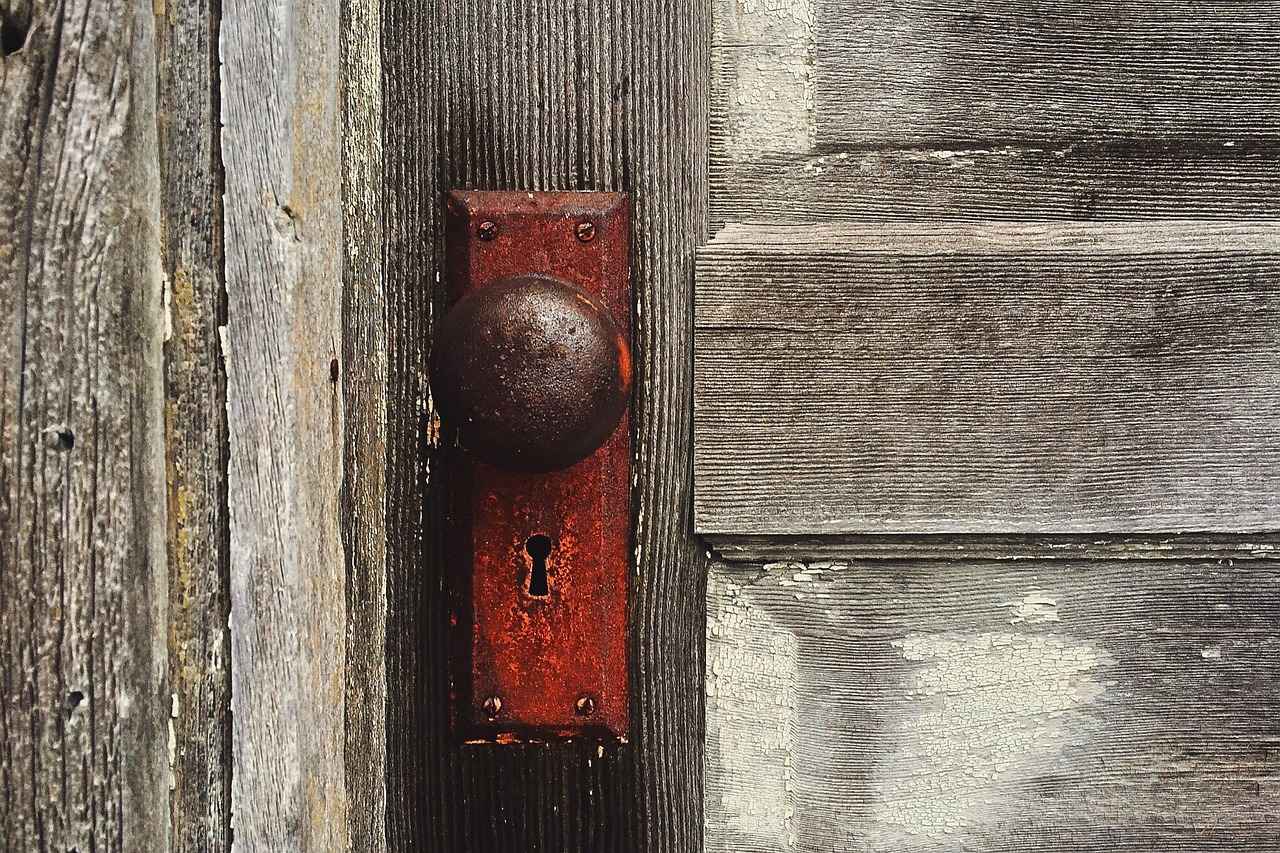
Using Vintage Doors as Unique Dividers
Using vintage doors as unique dividers can transform your living space into a visually stunning and functional area. These doors not only serve as practical room dividers but also add a touch of character and history to your home. In this section, we will explore how to effectively source, refurbish, and install vintage doors to create a distinctive room divider that reflects your personal style.
Finding the perfect vintage door can be an exciting adventure. Here are some tips to help you source these unique pieces:
- Thrift Stores: Many thrift stores and second-hand shops have a selection of vintage doors. Take your time to explore and look for doors that resonate with your style.
- Salvage Yards: Architectural salvage yards are treasure troves of vintage materials. You can often find doors in various styles and conditions.
- Online Marketplaces: Websites like Craigslist, Facebook Marketplace, and eBay can be excellent sources for vintage doors. Be sure to check the listings regularly.
- Local Auctions: Attend local estate sales or auctions where you can bid on vintage doors and other unique items.
Once you’ve sourced your vintage door, the next step is refurbishment. Here’s a simple guide:
1. Clean the Door: Remove any dirt or grime using a gentle cleaner.2. Inspect for Damage: Check for cracks, chips, or warping that may need repair.3. Sand the Surface: Use sandpaper to smooth out any rough areas and prepare the surface for painting or staining.4. Paint or Stain: Choose a color or stain that complements your decor. Consider a matte finish for a vintage look.5. Add Hardware: Replace old hinges and knobs with new ones that match your style.
Installing your refurbished vintage door as a room divider can be straightforward. Follow these steps:
- Choose the Location: Decide where you want to place your divider. Ensure it fits well within the space.
- Measure the Area: Take accurate measurements to ensure the door will fit properly.
- Prepare the Frame: If necessary, build a frame or support system to hold the door in place.
- Hang the Door: Use sturdy hinges to hang the door securely. Ensure it swings freely and does not obstruct movement.
Using vintage doors as dividers offers several benefits:
- Unique Aesthetic: Vintage doors bring a one-of-a-kind charm to your home.
- Versatility: They can be used in various settings, from rustic to modern interiors.
- Eco-Friendly: Repurposing vintage doors is an environmentally friendly choice that reduces waste.
Incorporating vintage doors into your home decor not only enhances the visual appeal but also tells a story. By following these steps to source, refurbish, and install, you can create a beautiful and functional room divider that reflects your unique style.

Creating a Fabric Panel Divider from Old Curtains
Transforming your living space can be both an exciting and budget-friendly endeavor. One innovative way to accomplish this is by creating a fabric panel divider from old curtains. This not only helps in reusing materials but also adds a touch of elegance to your home. In this guide, we will delve into the steps involved in cutting, sewing, and hanging fabric panels, ensuring a soft and stylish separation of spaces.
Old curtains are often made from durable fabrics that can withstand wear and tear, making them ideal for dividers. Additionally, they come in various colors and patterns, allowing for a customized look that can enhance your decor. By repurposing these items, you are also contributing to environmental sustainability.
- Measure Your Space: Start by measuring the area where you want to place the divider. This will help you determine how many panels you need and their dimensions.
- Cut the Curtains: Lay the curtains flat and use fabric scissors to cut them into the desired sizes. Ensure that you leave extra fabric for hems.
Once you have cut your fabric, the next step is to sew the edges to prevent fraying. Here’s how:
- Hem the Edges: Fold the edges of each panel over by about half an inch and pin them in place. Sew along the edge to create a clean hem.
- Adding a Rod Pocket: If you plan to hang the panels, create a rod pocket by folding over the top edge and sewing it down, leaving enough space for the curtain rod to slide through.
After sewing, it’s time to hang your fabric panels. Here are some options:
- Curtain Rods: Install a curtain rod in the desired location and slide the panels onto the rod.
- Wall Brackets: Use wall brackets to hold the rod securely, ensuring stability.
- Tension Rods: For smaller spaces, consider using tension rods that can fit snugly between walls or in window frames.
To make your divider even more appealing, consider these finishing touches:
- Accessorize: Add decorative elements like fairy lights or fabric embellishments to enhance the visual appeal.
- Layering: Use multiple panels with different fabrics to create depth and interest.
In conclusion, creating a fabric panel divider from old curtains is a simple yet effective way to redefine your living space. By following these steps, you can achieve a stylish and functional divider that not only separates areas but also adds character to your home. Embrace the art of upcycling and let your creativity shine!

Transforming Bookshelves into Dividers
When it comes to home decor, bookshelves are often overlooked as versatile design elements. Not only do they provide storage for your literary treasures, but they can also serve as effective room dividers. This innovative use of bookshelves can help define spaces, create privacy, and enhance the overall aesthetic of your home. In this section, we will explore how to arrange and style bookshelves to maximize their potential as room dividers.
Bookshelves offer a unique blend of functionality and style. They can segment areas within a room without completely closing off the space, allowing light to flow while providing a sense of separation. Additionally, they are easy to customize and can be tailored to fit your decor style, whether it be modern, rustic, or eclectic.
- Consider the Height: Choose bookshelves that are tall enough to provide a visual barrier but not so tall that they overwhelm the space. A height of around 5 to 6 feet is often ideal.
- Open vs. Closed Shelving: Open shelving allows for light and visibility, making it a great choice for smaller spaces. Closed shelving can provide a more traditional look and can help hide clutter.
- Symmetry vs. Asymmetry: Decide whether you want a symmetrical arrangement for a more formal look or an asymmetrical layout for a casual, dynamic feel.
Once you’ve chosen the right bookshelf, it’s time to style it. Here are some tips to enhance its appearance:
- Mix and Match: Combine books with decorative items such as vases, sculptures, or framed photographs. This adds visual interest and breaks up the monotony of rows of books.
- Incorporate Lighting: Adding LED strip lights or small lamps can create a warm ambiance and highlight your favorite items.
- Use Color: Organizing books by color can create a stunning visual effect. Alternatively, you can use colorful boxes or baskets to store smaller items.
Bookshelves can effectively delineate spaces, especially in open floor plans. By positioning a bookshelf between a living area and a dining space, for example, you can create distinct zones while maintaining an open feel. Consider adding a small seating area or a plant on the opposite side of the bookshelf to enhance the separation.
While aesthetics are important, don’t forget the primary function of your bookshelf: storage. Keep your books organized and accessible. Use bookends to prevent books from toppling over and ensure that the most frequently used items are within easy reach. This not only keeps your space tidy but also makes it more inviting.
To ensure that your bookshelf divider complements your overall decor, consider the following:
- Color Palette: Choose bookshelves that match or complement the color scheme of your room.
- Style Consistency: Ensure that the style of your bookshelf aligns with other furniture pieces in the room.
- Accessorize Thoughtfully: Use personal items that reflect your personality—this makes the space feel more like home.
By transforming your bookshelves into stylish room dividers, you can enhance the layout of your space while maintaining functionality. With the right arrangement and styling, your bookshelves can become a stunning focal point that adds character to your home.
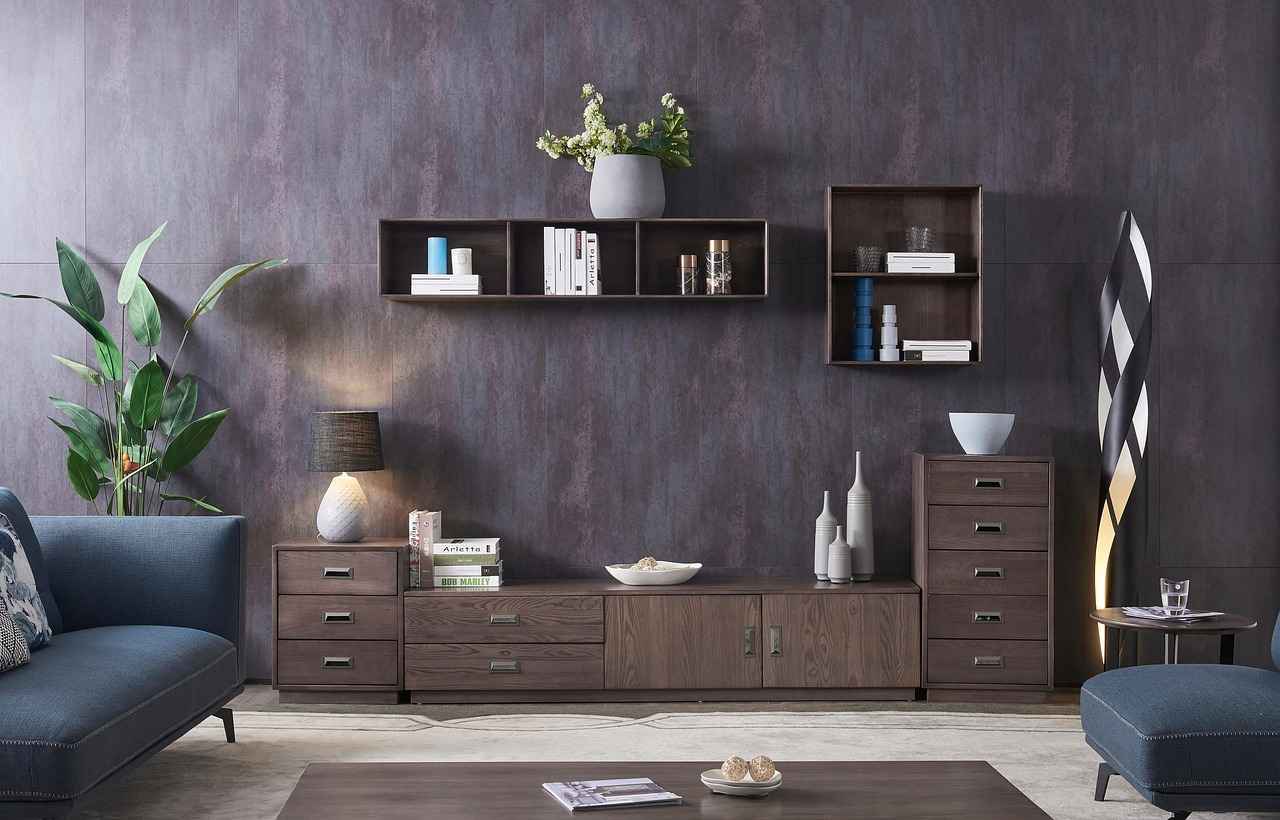
Using Wire Mesh for an Industrial Look
When it comes to creating a modern and stylish atmosphere in your home, wire mesh is a fantastic material to consider. It not only adds an industrial vibe to your decor but also serves practical purposes as a room divider. This guide will walk you through the steps to effectively frame and install wire mesh, allowing you to enjoy a seamless flow of light and air in your space.
Wire mesh is a versatile material that can effortlessly enhance the aesthetic of any room. Its transparent nature allows for the continuation of natural light, making spaces feel larger and more open. Additionally, wire mesh dividers can be customized to fit various styles, from rustic to contemporary, making them suitable for any home decor theme.
- Gather Your Materials: You will need wire mesh, a wooden frame (which can be made from reclaimed wood or purchased), screws, and a saw.
- Measure and Cut: Determine the size of your divider and cut the wooden frame to match. Ensure that the frame is sturdy enough to hold the wire mesh securely.
- Attach the Wire Mesh: Lay the wire mesh over the frame and use staples or screws to secure it tightly. Ensure there are no sharp edges exposed.
- Finish the Frame: Sand down any rough edges and apply a finish or paint that complements your decor.
Once your wire mesh frame is ready, it’s time to install it. Here are some tips:
- Location: Choose a spot where you want to create separation without blocking light. This could be between a living area and a dining space.
- Mounting: Use brackets or wall anchors to securely mount the divider. If it’s a freestanding divider, ensure it has a stable base.
- Decorate: Consider adding hooks to hang plants or decorative items on the wire mesh, enhancing its functionality and aesthetic appeal.
Maintaining your wire mesh divider is straightforward. Regularly wipe it down with a damp cloth to remove dust and debris. If the mesh starts to rust, a quick touch-up with rust-resistant paint can keep it looking fresh.
Beyond serving as a room divider, wire mesh can be used in various creative ways:
- Storage Solutions: Use wire mesh to create shelving or storage solutions that are both functional and stylish.
- Artistic Displays: Frame art or photographs with wire mesh for a unique display that allows light to filter through.
- Garden Dividers: Incorporate wire mesh in outdoor spaces to create distinct areas in your garden.
In summary, wire mesh is an excellent choice for those looking to add an industrial touch to their home while maintaining an open and airy feel. With its affordability and versatility, wire mesh dividers not only serve functional purposes but also enhance your overall decor. Whether you are creating a new space or redefining an existing one, wire mesh offers a stylish solution that is easy to implement.

Incorporating Plants into Your Divider Design
Incorporating plants into your room divider design is not only a practical way to separate spaces but also a fantastic method to enhance the overall ambiance of your home. Plants can add life and vibrancy to any area, creating a natural and inviting environment. Below are some creative ideas on how to effectively integrate potted plants or vertical gardens into your room divider.
Using plants as room dividers offers numerous benefits. They can improve air quality, add a splash of color, and create a sense of tranquility. Additionally, plants can serve as a natural sound barrier, absorbing noise and providing a peaceful atmosphere. With the right selection, plants can also complement your interior design style, whether it’s modern, rustic, or bohemian.
- Potted Plant Shelves: Create a multi-tiered shelf system where various potted plants can thrive. This not only divides the space but also acts as a stunning display of greenery.
- Hanging Planters: Utilize vertical space by hanging planters from the ceiling. This method adds height and dimension to your room while effectively separating areas.
- Plant Stands: Use decorative plant stands to elevate your plants. Arrange them in a way that they form a natural barrier, adding both style and functionality.
Vertical gardens, or living walls, are an innovative way to incorporate greenery into your living space. They can be designed using a variety of plants, from succulents to ferns, allowing for a lush and vibrant divider. Here’s how you can create one:
1. Choose a wall or a sturdy frame to support your vertical garden.2. Select plants that thrive in your chosen environment (light, humidity).3. Use pockets or grids to hold the plants securely.4. Ensure proper irrigation and drainage to keep the plants healthy.
For a unique look, consider combining plants with other materials in your room divider design. For instance, you can use a wooden frame to create a structured divider that holds potted plants in place. This blend of natural and man-made elements can enhance the aesthetic appeal of your space. Additionally, using recycled materials for the frame can align with eco-friendly practices.
To keep your plant divider looking its best, regular maintenance is essential. Here are some tips:
- Watering: Ensure that your plants receive adequate water without overwatering. Different plants have varying needs, so be attentive.
- Sunlight: Position your divider in a spot where the plants can receive the necessary sunlight. Rotate plants if needed to ensure even growth.
- Pruning: Regularly prune your plants to keep them healthy and to maintain the desired look of your divider.
Incorporating plants into your room divider design is a creative and sustainable approach to enhancing your living space. By choosing the right plants and arrangements, you can create a stunning focal point that not only divides areas but also brings a refreshing touch of nature indoors.

Crafting a Macramé Divider for a Bohemian Touch
Crafting a macramé divider can be an exciting way to add a touch of bohemian flair to your living space. Not only does it serve as a functional room divider, but it also acts as a stunning piece of art that can enhance the overall aesthetic of your home. In this guide, we will explore the basics of macramé, the materials you’ll need, and step-by-step instructions to create your very own macramé room divider.
Macramé is a form of textile-making that uses knotting techniques to create intricate patterns and designs. This craft has gained popularity in recent years due to its versatility and the unique, textured look it brings to home decor. Choosing macramé for your room divider allows you to customize the design, color, and size, making it a perfect fit for your space.
- Macramé cord: Choose a durable cord, such as cotton or jute, in a color that complements your decor.
- Wooden dowel or metal rod: This will serve as the top support for your divider.
- Scissors: For cutting the cord to your desired lengths.
- Measuring tape: To ensure accurate measurements.
- Optional embellishments: Consider adding beads or feathers for additional flair.
Follow these steps to craft your macramé room divider:
- Measure and Cut the Cord: Determine the height and width of your divider. Cut several lengths of macramé cord, typically around four times the desired length of the finished piece.
- Attach the Cord to the Dowel: Fold each cord in half and attach it to the wooden dowel using a lark’s head knot. This will create a secure base for your design.
- Create Your Design: Use various knotting techniques, such as square knots or spiral knots, to create your desired pattern. Be creative and experiment with different styles.
- Finish the Bottom: Once you reach the desired length, secure the ends of the cords with a simple knot or braid them together for a polished look.
- Hang Your Divider: Use hooks or brackets to hang your macramé divider from the ceiling or wall, ensuring it is securely fastened.
To make your macramé divider truly stand out, consider these styling tips:
- Incorporate Lighting: Place soft lighting behind the divider to create a warm and inviting atmosphere.
- Add Plants: Position potted plants at the base of the divider to enhance the natural look and feel.
- Layer Textures: Combine your macramé divider with other materials, such as wood or metal, for a visually striking effect.
Creating a macramé divider is not only a fun DIY project but also a fantastic way to express your creativity and add a personal touch to your home. With the right materials and techniques, you can craft a stunning piece that serves both functional and aesthetic purposes, making your space feel more cohesive and inviting.

Using Old Windows for a Vintage Aesthetic
Repurposing old windows can add a unique touch to your home decor, creating a charming and nostalgic room divider that tells a story. This DIY project not only enhances your space but also promotes sustainability by giving new life to discarded materials. Below, we explore how to effectively clean, paint, and arrange old windows to create a delightful addition to your home.
Old windows offer a variety of benefits for your home. They are typically made from durable materials, which means they can withstand the test of time when properly maintained. Additionally, their unique designs can add character and vintage charm to any room. Using old windows as a room divider also allows for light to flow between spaces, creating an open yet defined area.
- Gather Supplies: You will need glass cleaner, a sponge, a soft cloth, and gloves.
- Remove Dust and Dirt: Start by wiping down the frame and glass with a damp sponge to remove any surface dust.
- Clean the Glass: Apply glass cleaner and use a soft cloth to achieve a streak-free shine.
Once your windows are clean, consider giving them a fresh coat of paint. Choose a color that complements your existing decor. Here’s how:
1. Sand the Frame: Lightly sand the window frame to help the paint adhere better.2. Apply Primer: Use a primer suitable for wood to ensure a long-lasting finish.3. Paint: Apply your chosen paint color, allowing adequate drying time between coats.
After your windows are cleaned and painted, it’s time to arrange them. Here are some ideas:
- Hinge Method: Attach multiple windows with hinges to create a folding divider that can be easily opened or closed.
- Fixed Installation: Securely mount the windows to the wall for a more permanent solution.
- Freestanding Design: Use a sturdy base to allow the windows to stand independently, making it easy to reposition them as needed.
To enhance the aesthetic appeal of your window divider, consider accessorizing it with:
- Decorative Shelves: Install small shelves on the window frame to display plants or knick-knacks.
- Hanging Decor: Add hanging plants or artwork to personalize the divider further.
- Lighting: Incorporate fairy lights or small lamps to create a cozy ambiance.
By following these steps, you can transform old windows into a stunning room divider that not only serves a functional purpose but also acts as a beautiful focal point in your home. Embrace the vintage aesthetic and let your creativity shine through this eco-friendly project!

Tips for Styling Your Upcycled Room Divider
When it comes to enhancing your living space, styling your upcycled room divider is a crucial step that can transform its appearance and functionality. A well-styled divider not only serves its purpose but also integrates seamlessly into your overall decor. Below are some practical tips to help you accessorize and elevate the visual appeal of your new room divider.
Establishing a cohesive color palette is essential. Consider the existing colors in your room and select hues that complement or contrast effectively. You can paint your divider or use fabric in your chosen colors to create a unified look.
Adding various textures can significantly enhance the visual interest of your divider. Use materials like woven fabrics, reclaimed wood, or even metal accents. Mixing textures will create depth and dimension, making your divider a focal point in the room.
Accessorizing with decorative elements is a great way to personalize your divider. Consider incorporating:
- Artwork: Hang small frames or art pieces that resonate with your style.
- Mirrors: Attach mirrors to create an illusion of space and light.
- String Lights: Drape fairy lights for a whimsical touch.
Plants can breathe life into your room divider. Consider using hanging planters or attaching shelves for potted plants. Not only do they add color, but they also improve air quality and create a calming atmosphere.
Think about how your divider can serve multiple purposes. For instance, if you have a bookshelf divider, style it with books, decorative boxes, and personal items. This not only makes it functional but also visually appealing.
Using fabrics can soften the look of a room divider. Consider adding curtains or drapes that can be opened or closed, providing flexibility in how much separation you want. Choose fabrics that match your decor style, whether it’s bohemian, modern, or rustic.
Incorporate personal items that tell your story. This could be travel souvenirs, family photos, or handmade crafts. Personal touches will make your divider feel unique and meaningful.
Lighting can dramatically change the ambiance of your space. Use spotlights or LED strip lights to highlight your divider. This not only adds warmth but also draws attention to the styling elements you’ve incorporated.
Don’t hesitate to change the decor according to seasons or holidays. For example, adding autumn leaves or festive ornaments can keep your divider looking fresh and in tune with the time of year.
Lastly, remember that a cluttered divider can detract from its beauty. Regularly declutter and organize the items displayed on or around your divider to maintain a clean and inviting look.
By following these tips, you can effectively style your upcycled room divider, ensuring it not only serves its functional purpose but also enhances the overall aesthetic of your home. Embrace creativity and let your personality shine through in your decor choices!
Frequently Asked Questions
- What materials are best for upcycling into room dividers?
When it comes to upcycling, the sky’s the limit! You can use old pallets, vintage doors, fabric from curtains, bookshelves, wire mesh, or even old windows. Just think about what you have lying around and how it can be transformed into something beautiful and functional!
- Can I really make a room divider on a tight budget?
Absolutely! Upcycling is all about using what you already have, which means you can create stunning room dividers without breaking the bank. With a little creativity and elbow grease, you can turn discarded items into stylish decor.
- How do I ensure my room divider is sturdy and safe?
Great question! Always consider the durability of the materials you choose. For instance, if you’re using old pallets, make sure they are in good condition. Additionally, secure your divider properly to prevent it from tipping over, especially if it’s tall or freestanding.
- What are some tips for styling my new room divider?
Styling is key! Think about adding plants, decorative items, or even lighting to enhance the look of your divider. You can also use it to display books or art, turning it into a functional piece that complements your overall decor.
- Is it difficult to create a macramé room divider?
Not at all! If you can tie a knot, you can create a macramé divider. There are plenty of tutorials online that can guide you through the process step-by-step, making it a fun project for beginners and experienced crafters alike!














